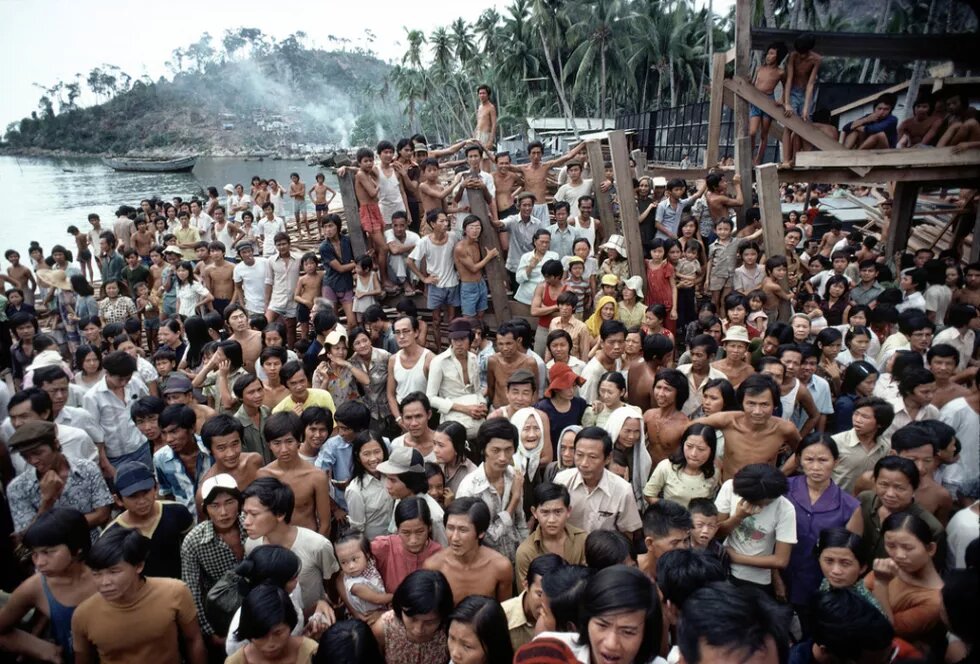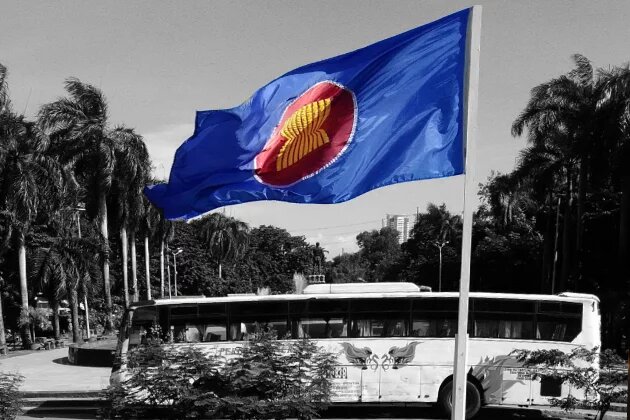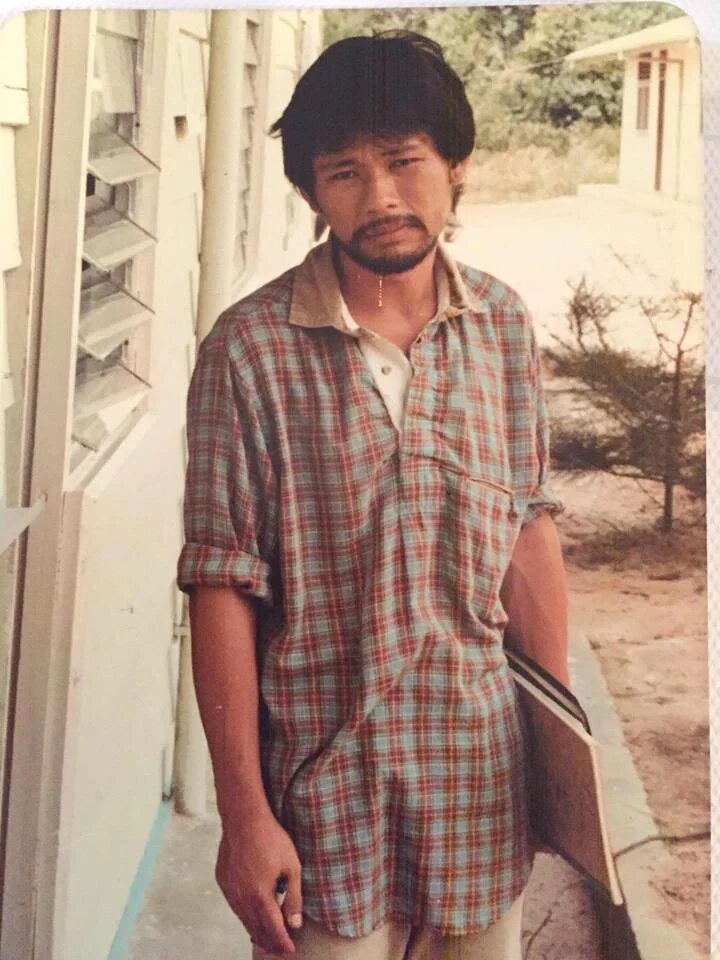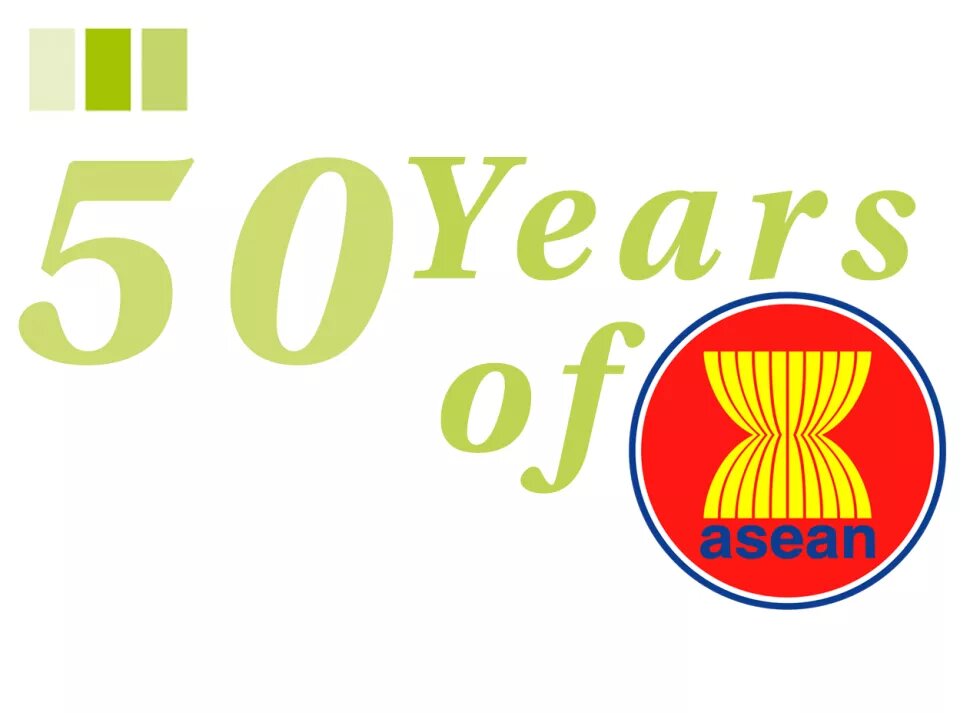

Fifty years is a long time. Memory will play tricks with you after such a time, and I can’t quite remember when it was I first heard of the Association of Southeast Asian Nations, ASEAN.
I do have some recollections as a pre-teenager hearing about SEATO—the Southeast Asia Treaty Organization—and having the notion of “containing Communism” drilled into my mind, even at that young age.
This was perhaps the reason I ended up connecting SEATO with ASEAN in later years. Of course SEATO was formed in 1954, nearly 15 years before the birth of ASEAN, and just two months after my country of birth was divided into two parts, the northern part soon to come under the rule of the Vietnamese who believed in Communism.
I was far too young to truly decipher the aims or effectiveness of such organizations. Neither did I have any understanding of the theories or practice of Communism. As a youth growing up during the “Viet Nam War” in the 60s, all I knew—all I was told—was that communists were heartless and evil people. That assessment was promoted in relentless propaganda films showing the exodus of people from North Viet Nam into the South in the mid-50s, or recounting the devastating land reform programs in which thousands were publicly denounced, tortured, and executed in villages in North Viet Nam.
During the Tet Offensive of 1968, propaganda turned into reality: communist troops invade the city of Hue in Central Viet Nam and held it for a month. In that month, they assassinated hundreds of civil servants, intellectuals and others.
Following fierce battles, South Vietnamese and American soldiers ejected the northern troops. But in their hasty retreat, the communists executed an estimated 3,000 people. When the mass graves were discovered, the remains showed that many of victims had been bound together, shot, stricken with blunt force, or buried alive.
I was ten years old, and the horror of that time was also a personal tragedy: my father was captured on the first day of the offensive by communist soldiers, marched to the North and imprisoned for 12 years. He was a civilian administrator of the central region, based in Da Nang, and he’d taken our family to Hue for the holidays. I still think it’s a miracle he wasn’t among those executed in the event, and that he managed to survive the years of imprisonment and to later to be reunited with his family.
In the month following the offensive, we returned to Da Nang. Without my father, our family moved into a small house. It wasn’t long before my room was turned into a bunker of sandbag to protect us from the nightly rocket attacks. I inherited a corner where my father’s bookshelves were.
I would later learn that in the 12 years in prison, my father was never allowed anything to read. Meanwhile, I took to the books, magazines, and documents he left behind, from art and science to politics. And thus I was exposed to the stories of diplomats and leaders who wanted to face the communist threat in Viet Nam, or in neighboring countries and elsewhere in the world.
It wasn’t a natural interest for a boy of my age. Still, I began paying more attention to SEATO and ASEAN as regional groups that feared Communism and wished to stop it spreading further.
Among the articles on my father’s shelves, I also found those describing the Non-Aligned Movement. I started to develop ideas about people who wanted their own independence, and who wished to control their own destiny: Nasser, Tito, Nehru, Sukarno, etc.
I began to imagine what it might have been like to be at the Bandung conference of 1955, and to learn of people and nations rising out of the ashes of colonialism and imperialism, deciding to no longer be pawns in a geopolitical game of war, and to claim their “rightful” space in the world.
When the war in Viet Nam ended, I emigrated to the U.S. For a course in international relations in college, I wrote about SEATO: realizing it wasn’t Southeast Asian leaders who formed the alliance. Most of the members of the group were from Western countries, not Southeast Asian. ASEAN, by contrast, represented to me a bloc of Asian nations that came together to protect themselves, and to decide its own future.
ASEAN further appealed to me as I wrestled with my own personal questions regarding what it meant to be Asian in the West. I was developing a sense of identity, and I wanted to identify myself as a Southeast Asian.
Southeast Asians weren’t too much of a presence in the U.S. in the late 1970s. We were a young community which had not had the time and resources to establish ourselves—and those who had just arrived were concerned with the Cold War, whereas other Asians were much more integrated and more attuned to the Civil Rights movement.
I felt lonely. The history of Chinese or Japanese Americans didn’t really attract my attention while we were still obsessed with the defeat in Viet Nam, and the difficult lives of our people under Communism. And in those days ASEAN countries held my interest more than the struggles and early triumphs of South Korea or Japan.
In 1984, I abandoned life in America and returned to Asia. I went to a place in Indonesia few had heard about before. Pulau Galang was a remote island with a few fishing villages. This was where the Indonesian government chose to place a refugee camp. There were about 10 thousand people crammed into rows of wooden barracks, struggling in the punishing heat, hoping against hope that they would be allowed to resettle in the West. They were the “boat people” from Viet Nam. In the year I worked there, the camp began to also receive refugees from Cambodia who had overwhelmed the asylum centers in Thailand. Half of the refugees in the camp were accepted by the governments of Canada, the U.S., France and Australia.
Over the years, scholars, journalists, filmmakers, and the refugees themselves have found ways to tell the stories of the years of doctrinaire and authoritarian rule in Viet Nam, of religious or political persecution, or rigid state-controlled economic strategies that resulted in harsh poverty, and of re-education camps that devoured ten of thousands of former soldiers and civil servants. In the case of Cambodia, there were also stories of genocidal abuses, indiscriminate mass killings, forced labor and imprisonment.
I struggle still today to relate such stories. There were too many tales of family separations, botched boat escapes, stolen gold and money by unscrupulous organizers. We couldn’t imagine the terrible thirst, hunger, rapes and pillage, and untold deaths at sea. I came to work as a teacher for those accepted for resettlement in the U.S., but the job was near impossible and meaningless when we thought of the despair, the losses and fears, and even the impossible hopes and tenacious will of the refugees.
It was hard to find a position vis-à-vis the treatment of these refugees by the neighboring ASEAN countries. We lived daily with the horrors that had defined the refugee experience, did what we could to alleviate the suffering around us, and in between, we debated what would the proper attitude that should be adopted.
On the one hand, there were the geopolitical issues—isolating Viet Nam due to its communist adherence, and its “invasion” of Cambodia. ASEAN seemed to be at odds over who and which factions to support in Cambodia, given the devastation of the Khmer Rouge years and the Vietnamese occupation. And of course, ASEAN had to observe its long-standing non-interference policy regarding other nations in the region. From early on, ASEAN was not destined to play any military role, but would rather concentrate on communal economic growth and social progress.
On the other hand, there was the humanitarian issue. How can you turn away such desperate refugees? But then, how to help? The authorities in Indonesia kept Pulau Galang as secret as best it could from their own people, for they couldn’t help Vietnamese and Cambodians when their own people were living in poverty. Malaysia faced the same situation, and neither country wanted to appear welcoming, or offering the “pull factor” to people in Viet Nam and Cambodia or Laos and encourage further exodus. So it was with the Philippines and Thailand.
We sat in horror in the camp, hearing of boats being robbed by pirates without government intervention. Or of boats being sunk by the authorities and set adrift in open sea. We also witnessed endless incidents of abuse and mistreatment of the refugees by military and police forces. None of this quite shattered my own views about ASEAN unity, and it helped me to appreciate the obstacles faced by ASEAN nations as they tried to forge comment policies while dealing with its own problems and respecting the autonomy of members.
These questions, without answers, stayed with me throughout the time I was in Pulau Galang. Afterward, I returned to the U.S., and the questions stayed for months, along with the torments about the refugees’ conditions and future, and conflicting emotions regarding ASEAN nations and their asylum policies.
Then came the momentous reunion: my parents had been allowed out of Viet Nam. The euphoric moments of familial rediscovery in California, of course, were interspersed with horrific stories of my father’s years in prison, and my mother’s ordeal of surviving alone, waiting for his release.
Toward the end of that year, I traveled to London to work in the Vietnamese Service of the BBC. In the mid 1980s, news from Viet Nam was a rarity. There were about half a dozen foreign reporters from the West allowed into the country. We ended up relying on reports from a few: well-known journalists Jean-Claude Pomonti, Nayan Chanda, Murray Hiebert, and the BBC correspondents in neighboring countries who could tell the world what was happening in Viet Nam, Cambodia or Laos.
Perhaps the major issue of those years was the various stances taken by individual countries of Southeast Asia, and collective as ASEAN, vis-à-vis the presence of Viet Nam in Cambodia. As then Indonesia Foreign Minister Mochtar Kusumaatmadja stated, it wasn’t a simple problem but a convoluted issue involving various communist factions in the two countries, then a matter of Chinese dominance in the region, the needed decision by the United Nations regarding support for a genocidal regime in Cambodia or for Viet Nam, seen as the aggressor, and the role of the United States as it contemplated a new role in the region following its defeat in Viet Nam.
ASEAN nations too seemed conflicted, with some fearing a Chinese threat more than the Vietnamese military expansion into Cambodia. No one country, or the whole of ASEAN could force Viet Nam to a conference table, and most negotiations happened behind closed doors, in bilateral meetings with cryptic messages.
Some observers have argued that the Vietnamese intervention and occupation of Cambodia served as a unifying factor for ASEAN, and that it became a motivation for the organization to speak forcefully of its goal to encourage unity and stability in the region. Publicly, there was a mixture of political, economic, and diplomatic measures to convince Hanoi to abandon the venture next door.
Others of us trying to understand the situation and offer analyses suspected there were serious divisions within ASEAN, and it would take a while for the organization to truly have a collective influence. Viet Nam would go alone, suffering as a pariah for many more years, while ASEAN, along with the U.S, and the U.N., was forced into accepting a coalition of Khmer forces that included the dreaded Khmer Rouge on international stage.
In 1989, I came back to Viet Nam for the first time, reporting for National Public Radio. We avoided the hordes of journalists crowding at various border points to witness the withdrawal of Vietnamese troops from Cambodia. Instead we focused on families waiting for loved ones. Their sense of happiness about the end of the Cambodia “international duty” mission was tinged with fears about further unemployment and more mouths to feed.
Almost 30 years after ASEAN was formed, in 1995, Viet Nam was welcomed into its ranks. An organization formed to contain the spread of Communism now had a former foe among its membership. The irony must have struck some as a time of change and of comfort in accepting such an astonishing turn around. Others must have felt pride in a transformation of ASEAN where defense against communism takes a back step along with the cold war and U.S. influence, letting a more realistic approach fostering economic cooperation to play a larger role.
Many of us were personally and slightly conflicted. Had the communist leaders in Ha Noi changed enough? Perhaps, and perhaps there would be a reassessment of its role in Cambodia. Enough time had passed for the world to also accept that ASEAN had gambled to accept the Khmer Rouge presence at the United Nations. Viet Nam was then being seen as a useful counterbalance to potential Chinese military influence in the region.
Most of all, the question was about whether Viet Nam deserved to have their isolation from the rest of the region and the world come to an end. And most importantly, had a free market economy taken sufficient root in the country, and its people were now given a chance to live a more decent life?
The questions about human rights in Viet Nam remain a sore spot. I’ve argued that ASEAN nations could be more forceful in raising this issue, much as I understand their collective non-interference approach—as well as their fears of having their own human rights records questioned.
Once at an ASEAN conference in Cambodia nearly 15 years ago, I asked the venerable Anand Panyarachun, former prime minister of Thailand, about steps that ASEAN would take to pressure Burma to relax its human rights restrictions.
"That’s such an American term,” Anand responded. “We don’t pressure. We persuade.”
That difference has always been at the core of an organization that places value on non-confrontational and consensus-based approaches to solving differences. Perhaps it is Asian manners to prefer the use of quiet diplomacy and avoid hurtful public embarrassment. Fifty years on, the effectiveness of that approach is still questioned by many observers.
That conflict between soft diplomacy and a forceful attitude was evident at the gathering—pitting the American delegation against the ASEAN representatives. It was organized by the Asia Society, with the diplomat Richard Holbrooke in the chairing role. He was advocating for a stronger American presence in ASEAN affairs with a customary forceful tone. Perhaps it was tactical, but at times he seemed to display a sense of anger at the luke warm reception. The ASEAN and other Asian diplomats were by contrast subdued and restrained, although firm. An entire day of discussion amounted to nothing, and no one among the ASEAN diplomats said the thing that were whispered during the break—that America was not a Southeast Asian nation and couldn’t demand a such strong role.
I could detect in the whispers a bit of annoyance, but I was in an odd position.
Among all the representatives invited, there was no one from Viet Nam. A Vietnamese American colleague and I came from the U.S., not quite understanding why we had been invited. We surely couldn’t give the Vietnamese perspective, and the representatives from ASEAN seemed to expect we would not agree with the American position.
In the end, to get out of this vexing position, we both took the “safe” path by being mostly quiet, seeing ourselves mostly as observers. That wasn’t too effective, and didn’t quite justify our participation. Perhaps the ASEAN non-confrontational approach had rubbed off on us—it was useful to us.
Ten years ago, I moved back to settle in Viet Nam. It's understandable that the new generation here is more focused on the U.S. and China than ASEAN. I am heartened to see people here travelling into ASEAN countries without the cumbersome visa requirements. This has spurred more tourism. I also hear of many studying and working in places like Singapore, Bangkok, and Yangon. These people will see the presence and influence of China in the region, not only within their own country where China will always be a threat. They will perhaps look more to ASEAN as a counterbalance.






